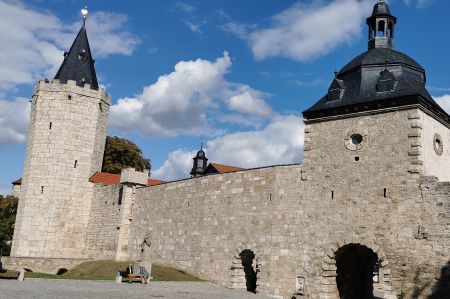Mühlhausen in Thuringia - worth seeing timbered old town
- Written by Portal Editor
An important date had led us to the imperial city of Mühlhausen in Thuringia, which existed until 1802 and is world-famous for its rich historical heritage, so Mühlhausen was also the place where Johann Sebastian Bach and Thomas Müntzer worked.
In the Middle Ages, the imperial cities of Mühlhausen and Nordhausen were the second most powerful cities in the Thuringian area after Erfurt, as there was a historically significant connection: the Thuringian Tricity League.
Historically significant buildings in the imperial city of Mühlhausen
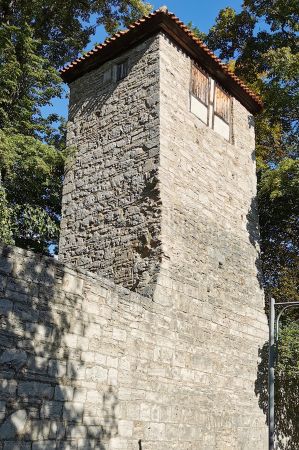 Numerous historical castle-like buildings still bear witness to the former importance of the imperial city of Mühlhausen, such as the largely preserved city wall with its walkable battlement, the inner Frauentor located in the city wall, the wonderfully colorful half-timbered buildings or one of the church buildings such as the Marienkirche, as we are at were able to determine on our first tour. Between the Frauentor and the Rabenturm there is a 17 m long and 9 m high section of the former city wall, which leans outwards by 1 cm every year and threatened to crumble. This section was renovated in 2018 by dismantling and rebuilding. The inner and outer Frauentor are preserved parts of the former boulevard of the imperial city; Aligned with the west portal of St. Mary's Church, they were used at the time to receive high dignitaries up to the title of emperor to visit the Palatinate.
Numerous historical castle-like buildings still bear witness to the former importance of the imperial city of Mühlhausen, such as the largely preserved city wall with its walkable battlement, the inner Frauentor located in the city wall, the wonderfully colorful half-timbered buildings or one of the church buildings such as the Marienkirche, as we are at were able to determine on our first tour. Between the Frauentor and the Rabenturm there is a 17 m long and 9 m high section of the former city wall, which leans outwards by 1 cm every year and threatened to crumble. This section was renovated in 2018 by dismantling and rebuilding. The inner and outer Frauentor are preserved parts of the former boulevard of the imperial city; Aligned with the west portal of St. Mary's Church, they were used at the time to receive high dignitaries up to the title of emperor to visit the Palatinate.
Construction of the city wall of Mühlhausen in the 12th century
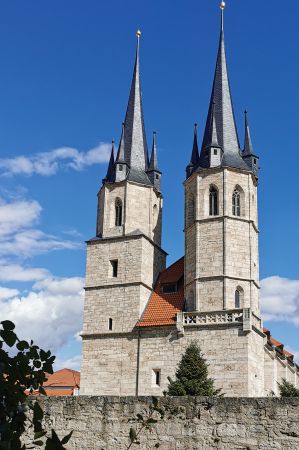 In the 11th century, the old town of Mühlhausen began to emerge as a market settlement, followed in the 12th century by the new town around the Marienkirche under Emperor Friedrich I Barbarossa. In 1135, Emperor Lothar III reconciled. in the first so called "villa regia" Mühlhausen finally with Konrad von Staufen. In 1135, Mühlhausen was the first place in Thuringia to receive city rights. Then, in 1180, Henry the Lion conquered Mühlhausen, which had become a major centre of imperial power.
In the 11th century, the old town of Mühlhausen began to emerge as a market settlement, followed in the 12th century by the new town around the Marienkirche under Emperor Friedrich I Barbarossa. In 1135, Emperor Lothar III reconciled. in the first so called "villa regia" Mühlhausen finally with Konrad von Staufen. In 1135, Mühlhausen was the first place in Thuringia to receive city rights. Then, in 1180, Henry the Lion conquered Mühlhausen, which had become a major centre of imperial power.
In the 12th century, the "royal city" of Mühlhausen consisted of several relatively independent settlements in the vicinity of the castle, which were probably only connected to form a unit by a rampart and moat. Around 1200 the city wall was built around the city center (49 hectares) with seven double gates and 38 defensive and pulpit towers and a length of 2.7 kilometers, which, although modified in the following centuries, has survived almost completely until the present day . Mühlhausen, originally a royal chamber estate, received coinage and customs rights at the beginning of the 13th century. At the same time, the city was closed off by walls against the castle, which was ruled by a royal burgrave.
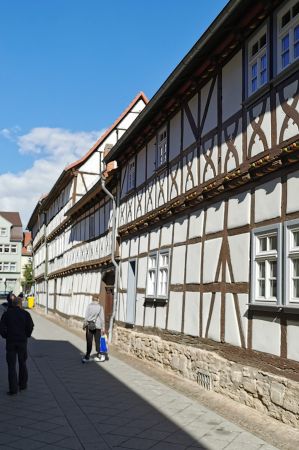 Around 1220, the "Mühlhäuser Reichsrechtsbuch" (the oldest city law book in German) was recorded according to the Reich's law. It also became applicable law for the imperial city of Nordhausen. In 1251, the town of Mühlhausen received the right to appoint a mayor and thereby became an imperial town, although that office was still pledged to the Count of Henneberg for a time in the 14th century. In the meantime, the burgraveship had also come to an end: in 1256 the citizens stormed the castle and razed it to the ground. Emperor Charles IV confirmed the city's imperial freedom. This enclosed its entire territory with a second fortification with numerous watchtowers and the "Landgraben". In the middle of the 14th century the guilds received representation in the council. The imperial city ("des riches stadt") Mühlhausen had been a member of the Hanseatic League since 1286. The city acquired 60 surrounding villages, built many town houses and 14 churches. The latter were almost all built by the Teutonic Knights. The Rabenturm, also part of the city's fortifications, and its foundations were the cemetery for plague patients in the Middle Ages.
Around 1220, the "Mühlhäuser Reichsrechtsbuch" (the oldest city law book in German) was recorded according to the Reich's law. It also became applicable law for the imperial city of Nordhausen. In 1251, the town of Mühlhausen received the right to appoint a mayor and thereby became an imperial town, although that office was still pledged to the Count of Henneberg for a time in the 14th century. In the meantime, the burgraveship had also come to an end: in 1256 the citizens stormed the castle and razed it to the ground. Emperor Charles IV confirmed the city's imperial freedom. This enclosed its entire territory with a second fortification with numerous watchtowers and the "Landgraben". In the middle of the 14th century the guilds received representation in the council. The imperial city ("des riches stadt") Mühlhausen had been a member of the Hanseatic League since 1286. The city acquired 60 surrounding villages, built many town houses and 14 churches. The latter were almost all built by the Teutonic Knights. The Rabenturm, also part of the city's fortifications, and its foundations were the cemetery for plague patients in the Middle Ages.
Despite some loss of substance - in the 19th century all the city gates were demolished except for the outer and inner Frauentor - the historic fortifications still give an impressive impression of the strength and importance of the former free imperial city.
Panoramic view and mature trees
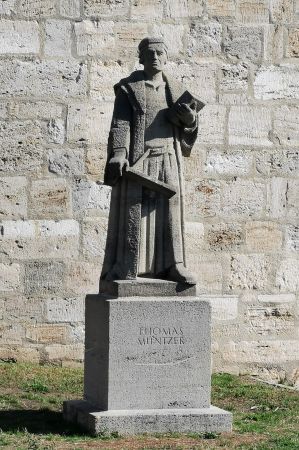 From the city side of the inner women's gate we were able to visit the fortifications over a length of more than 370 meters; In addition, the viewing platform of the Rabenturm offers a wonderful panoramic view of Mühlhausen and the surrounding area. Walk-in defence towers demonstrate the development of medieval fortifications like in a teaching cabinet. The towers, which were initially embedded in the wall, later emerge from the wall bond and are finally even placed in front of the wall in order to enable all-round defence in addition to frontal and flanking defence.
From the city side of the inner women's gate we were able to visit the fortifications over a length of more than 370 meters; In addition, the viewing platform of the Rabenturm offers a wonderful panoramic view of Mühlhausen and the surrounding area. Walk-in defence towers demonstrate the development of medieval fortifications like in a teaching cabinet. The towers, which were initially embedded in the wall, later emerge from the wall bond and are finally even placed in front of the wall in order to enable all-round defence in addition to frontal and flanking defence.
Parks with old trees in front of the inner city wall complete the picture: "An der Burg", Hirschgraben and Hoher Graben in the north and west as well as the Lindenbühl in the south. The walk outside the city walls is also very pleasant.
Please read as well:
Yilan Kalesi at Ceyhan close to Adana
The Camposanto - Old Cemetery in Buttstädt
-
 Hiking along Mühlhausen City Walls
Hiking along Mühlhausen City Walls
Hiking along Mühlhausen City Walls
Hiking along Mühlhausen City Walls
-
 Hiking along Mühlhausen City Walls
Hiking along Mühlhausen City Walls
Hiking along Mühlhausen City Walls
Hiking along Mühlhausen City Walls
-
 Hiking along Mühlhausen City Walls
Hiking along Mühlhausen City Walls
Hiking along Mühlhausen City Walls
Hiking along Mühlhausen City Walls
-
 Hiking along Mühlhausen City Walls
Hiking along Mühlhausen City Walls
Hiking along Mühlhausen City Walls
Hiking along Mühlhausen City Walls
-
 Hiking along Mühlhausen City Walls
Hiking along Mühlhausen City Walls
Hiking along Mühlhausen City Walls
Hiking along Mühlhausen City Walls
-
 Hiking along Mühlhausen City Walls
Hiking along Mühlhausen City Walls
Hiking along Mühlhausen City Walls
Hiking along Mühlhausen City Walls
https://www.alaturka.info/en/germany/thuringia/5789-muehlhausen-in-thuringia-worth-seeing-half-timbered-old-town#sigProIdd3f3917b20
